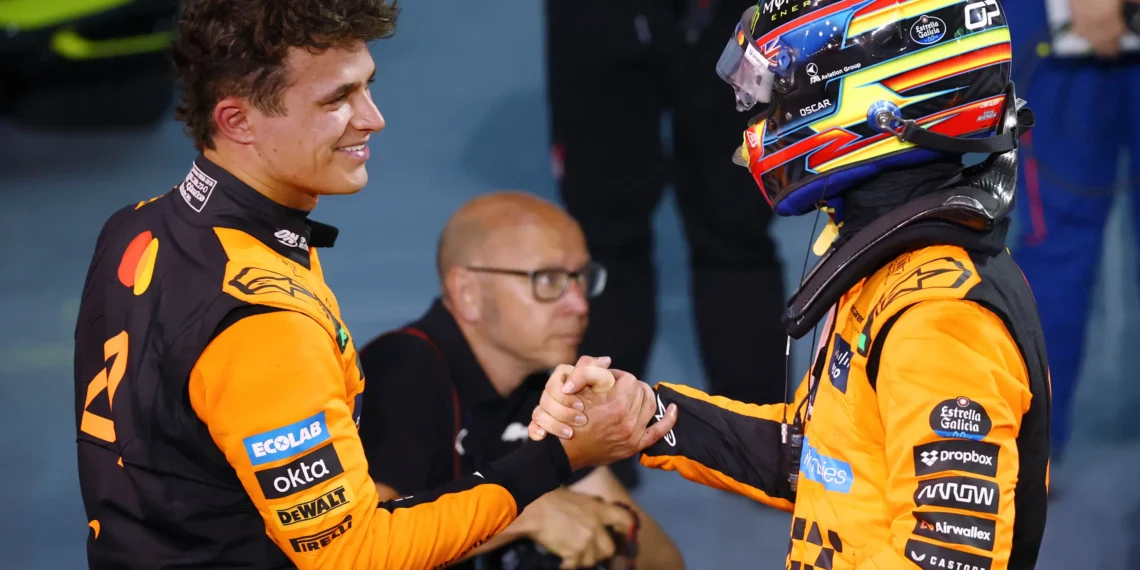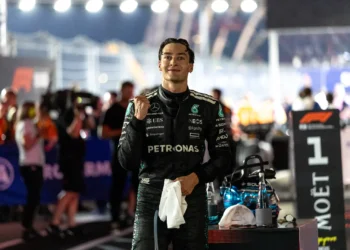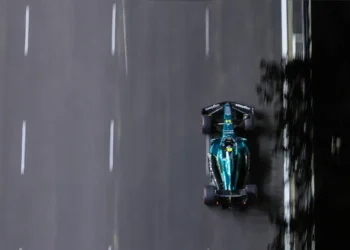McLaren’s High-Stakes Showdown: The Norris and Piastri Controversy Unraveled
In a dramatic turn of events at the Singapore Grand Prix, McLaren is facing a critical crossroads as tensions flare between drivers Lando Norris and Oscar Piastri. The team’s promise of a “detailed” and “very analytical” review of the clash between the two racers is not just about a handful of championship points lost; it’s a matter of trust, integrity, and the very foundation upon which the team operates.
Piastri’s frustration boiled over when he deemed the decision to allow Norris to retain his position following their wheel-banging incident at Turn 3 as “not fair.” This collision, while seemingly minor, has cast a long shadow over McLaren’s aspirations for constructors’ championship glory, stirring doubts about the fairness of their internal dynamics.
As the 2023 season unfolds, McLaren has been embroiled in multiple flashpoints regarding the treatment of its drivers, and Piastri’s grievances only amplify the stakes. He has been the unfortunate recipient of questionable decisions, feeling slighted by Norris’s strategic advantages in Hungary and the controversial position swap in Italy after Norris’s pit stop misfortunes. The incident in Singapore was the last straw, as Piastri found himself sidelined while his teammate was allowed to race aggressively, raising serious questions about the integrity of McLaren’s so-called ‘Papaya Rules.’
Andrea Stella, McLaren’s team principal, was candid about the challenges of maintaining trust within the team. “Keeping a bond of trust is not easy, but absolutely essential,” he stated after the race. The core principle of McLaren’s philosophy hinges on the belief in fairness and transparency. If either driver senses favoritism or inequitable treatment, it threatens to unravel the delicate balance of teamwork and competitive spirit.
As the team embarks on this critical review, the focus will not solely rest on the Singapore incident itself, which many observers deem straightforward. Instead, the pressing question is whether Norris overstepped the boundaries of McLaren’s non-contact policy. Stella emphasized the necessity of a thorough investigation, stating, “Our review needs to be very detailed and analytical,” underscoring the importance of understanding both drivers’ perspectives to reach a consensus.
Piastri’s pointed remarks on team radio—“If he has to avoid another car by crashing into his teammate, that’s a pretty s**t job of avoiding”—highlight the raw emotions swirling within the team. Though McLaren attempted to justify Norris’s actions by citing his collision with Max Verstappen as a contributing factor, Piastri’s skepticism remains palpable.
In the world of Formula 1, the stakes are not just about points; they are intricately tied to the trust drivers place in their team. McLaren has adopted a culture of open communication, encouraging both drivers to voice their concerns rather than bottle them up. CEO Zak Brown has likened this approach to “taking the air out of the balloon right away,” a strategy aimed at preventing unresolved tensions from festering.
However, as Piastri prepares for yet another round of discussions with McLaren’s management, the risk of him feeling unheard looms large. Stella has acknowledged the gravity of the upcoming conversations, recognizing that they are vital not only for the championship but for maintaining the drivers’ trust in the team’s operations—a trust that may ultimately prove more crucial than the points on the board.
As McLaren gears up for the United States Grand Prix, the eyes of the F1 world will be watching closely. The team stands at a pivotal moment, where the resolution of this controversy could either strengthen their unity or fracture their ambitions. The pressure is on, and with so much at stake, McLaren must navigate this turbulent waters with precision and integrity. The outcome could redefine their season—and the careers of both Norris and Piastri.













